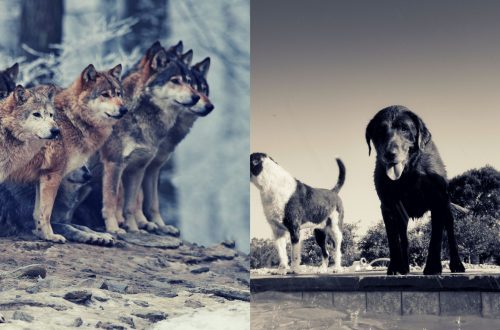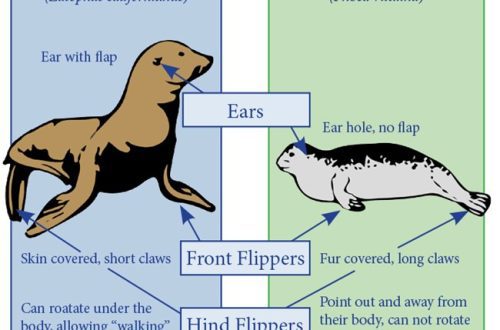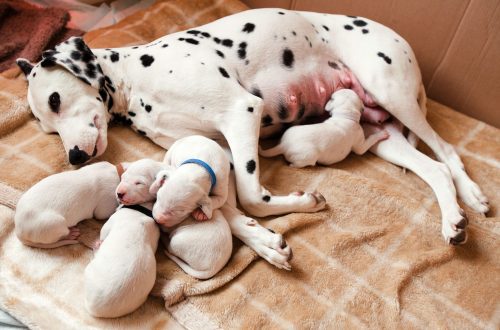
Wild dog adaptation: initiative and human contact
“We must be patient,” replied the Fox. “First, sit over there, a little way off, on the grass—like this. I will look askance at you, and you keep quiet. […] But every day sit a little closer…
Antoine de Saint-Exupery “The Little Prince”
How can you develop contact with a wild dog? At the very beginning of the journey, we will follow the advice of the wise Fox: sit at a distance, look askance, and every day we sit closer and closer.

Photo: www.pxhere.com
Contents
How to develop contact with a wild dog and teach it initiative?
We must give the wild dog time to look at us, sniff. Do not rush into this matter. I highly recommend starting work on adapting a wild dog from a distance: we go into the room, and check at what distance the dog is not so frightened by our presence that it starts to growl or squeeze into the wall. It is at this distance that we sit on the floor (or you can even lie down – the lower we are to the ground, the less danger we pose to the dog).
We sit sideways, do not look into the eyes, demonstrate signals of reconciliation (you can learn more about signals of reconciliation from the book “Signals of Reconciliation” by Tyurid Ryugas, which I recommend reading to every volunteer, curator or dog owner).
The presence session lasts at least 20 minutes, during which we can chant aloud so that the dog gets used to our voice and its inflections. We can eat sandwiches, from time to time tossing small pieces to the dog. At first, she will not eat them in your presence, but appetite comes with eating.
And gradually, every day, we are approaching a step or two along a conciliatory arc to the dog. Our goal: to start sitting in close proximity to the house on the side of it, along its long part.
When the dog has let us close enough (usually it takes from a day to five if we are working in parallel on the number of walls of the house, on predictability and variety, that is, we are doing complex work), we begin to sit, read aloud and eat sandwiches in close proximity to the dog. We begin to touch her side (and there it’s already not far from the TTach massage).
Before leaving the premises, we leave search and fur (you can use artificial fur) toys for the dog.
Of the classic and simplest search toys, I recommend leaving 1 – 2 shoeboxes filled up to half with crumpled sheets of toilet paper, where we throw a few bites of food before leaving. Let the dog explore the box and start rummaging through it for treats. Gradually, we can make the task more difficult by putting lids on the boxes, constructing structures with several lids that will fall and make noise when the dog tries to get food. This is what we need, we strive to explain to the dog that initiative and stubbornness lead to a reward: brawl, impudent!
You can make the task even more difficult by passing lattice-shaped fabric ribbons along the top of the box – stick your muzzle inside, fight with a slight tension of the ribbons, get food.
You can take a tennis ball, drill a hole in it, rinse from the inside and fill it with food. On the one hand, we teach the dog to insist on his actions – by rolling the ball, the dog receives a reward in the form of spilled food. On the other hand, the dog gets acquainted with toys in this way.
I don’t really like to use industrial toys for dispensing treats like Kong in practice with wild dogs, as they are usually made of material that is not very understandable and pleasant to a wild dog. These are domestic dogs that are willing to play with anything they find, chewing on hard rubber or trying to chase a hard plastic toy. And I strongly recommend buying Kongs for owners of pet dogs who tend to chew inappropriate objects at home or howl alone. But a wild dog, in my opinion, needs something softer, not inhibiting the manifestation of initiative with unpleasant tactile sensations. That is why – soft toilet paper or toilet paper rolls placed vertically in a shoe box, or well-ventilated wine bottle corks. That is why – a tennis ball, quite soft for dog jaws, velor on the tooth. Or a rug made of fleece ribbons, inside of which a feed is laid.
Our task at this stage is to provoke the dog into active actions – let him study the room and try it on the tooth.
If we are talking about regular, non-food toys, I recommend leaving soft, plush toys like Skinneeez skins indoors. We remember that we want to teach the dog to play, because. her ability to play and interest in the game will later help us in training and establishing contact. The sensation of fur in the mouth turns on the dog’s basic instincts – to tear and disturb the prey. If the toy also squeaks at the same time, as Skinneeez do – excellent, this is an imitation of hunting for a furry animal. There are also special fur toys that can be filled with food.
At first, the wildling will explore the offered toys alone, but once he realizes that these toys give out food, the impatience to get to them will quickly lead the dog to start looking for pieces in a shoe box in your presence. This is exactly what we need! Now we can encourage and praise with our voices for pushing the box, for being stubborn when looking for food.
We must also remember to play with distances. First, we place a bowl of food or a box of treats directly next to the hideout. Then we gradually remove the bowl / box further and further, provoking the dog to move, explore the room. At the moment when the dog lets us near him, we again offer a bowl or box in the immediate vicinity of the house, but from our hands.
If the dog starts digging in the box or eating from the bowl the person is holding, pull yourself together and do not pet the dog – let him make sure that eating from the bowl the person is holding is not scary. And in general … if we eat something tasty, and at that moment they begin to stroke us, even a loved one, how pleasant is his caress? To be honest, I would say something not very pleasant.
Once a dog has started eating from a human-held bowl, I highly, highly recommend that you stop bowl feeding and switch to hand feeding. This is a rather important point in the development of contact. The dog begins to perceive the human hand as a feeding hand, at the same time we can already reinforce some behavioral moments and begin to learn the simplest tricks, such as “Eyes” (when the dog receives a piece for looking into the eyes), “Spout” (the dog receives a piece for touching a person’s palm with his nose), “Give a paw” (a dog gets a piece for giving a paw to a person), the simplest search game, which consists in the fact that the dog must find in which of the two fists the piece is hidden.

Photo: af.mil
These are the simplest tricks that the dog quickly offers itself, because. they come from the natural behavior of the dog. And at the same time, they teach the dog how to interact with a person, explain to him that a person, in fact, is his personal big dining room, you just need to understand what kind of behavior the dispenser opens for, and let the person not worry about the fact that at first it represents exclusively mercantile interest for the dog. I will say what I have already said several times: there is a time for everything.
What methods to use to adapt a wild dog to life in a family?
I will dwell separately on the methods of working with a wild dog. Although, to be honest, in my personal practice they do not differ from the methods of working with domestic dogs.
I sincerely believe that it is necessary to work with a wild dog only with gentle methods, the method of operant training, in which the dog is an active participant in training, learns the world and tries to guess what is wanted from it. We can prompt it by pointing (when we guide the dog to the right action with a hand with a piece), because for shaping, which perfectly teaches the dog self-confidence and initiative, the wild dog is not yet ready. But I am categorically against the use of aversive teaching methods. World practice and statistics show the failure of these methods of work, especially with wild dogs. And this is logical: if, when you are forced to study a foreign language, the teacher regularly yells at you and hits your hands with a ruler, will you want to continue learning a language that you did not originally need? In what class will you break down, express everything you think to the teacher, and leave, slamming the door?
Why choose a method in which the dog is an active participant? Remember, we have already mentioned that initiative goes hand in hand with self-confidence, and both qualities help to fight distrust, caution and fear – those behavioral characteristics that most wild dogs exhibit.

Photo: flickr.com
In addition to the toys we leave in the dog’s room, I also recommend leaving a leash – let the dog get to know him before we put him on the harness.





